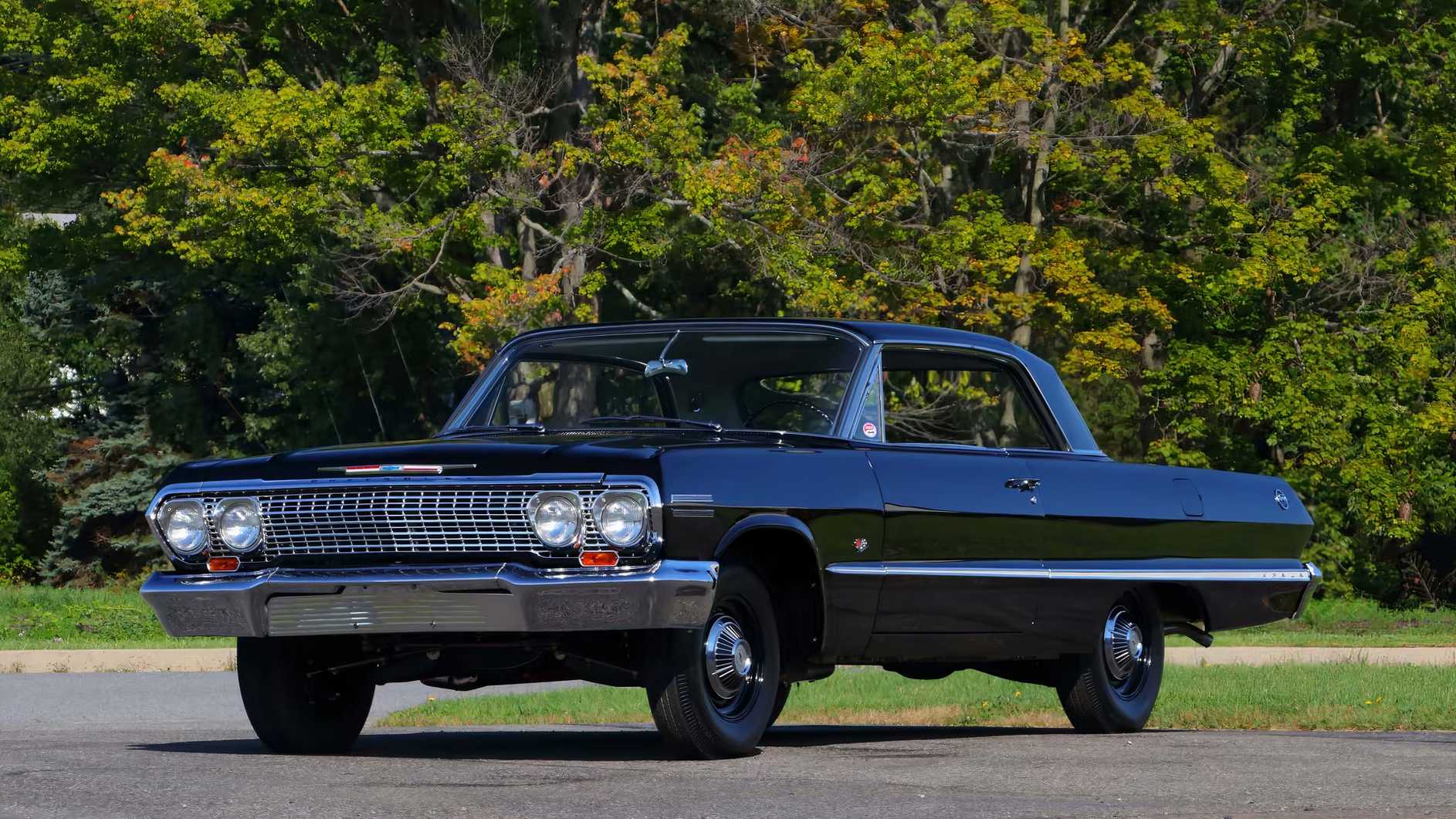There have been many iconic muscle cars in American automotive history, and even today, they can fetch high prices at auctions.
But not all muscle cars were winners. Some were short-lived and introduced during the so-called “malaise era” of muscle cars.
The malaise era came right after the 1973 oil crisis when automakers rushed to produce cars to boost sales. However, strict emissions regulations and fuel restrictions forced them to put underpowered engines in large cars.
This led to unreliable muscle cars that are now seen as some of the worst in history, like the ten listed here.
10) 1978 Ford Mustang King Cobra A Muscle Car Without Bite
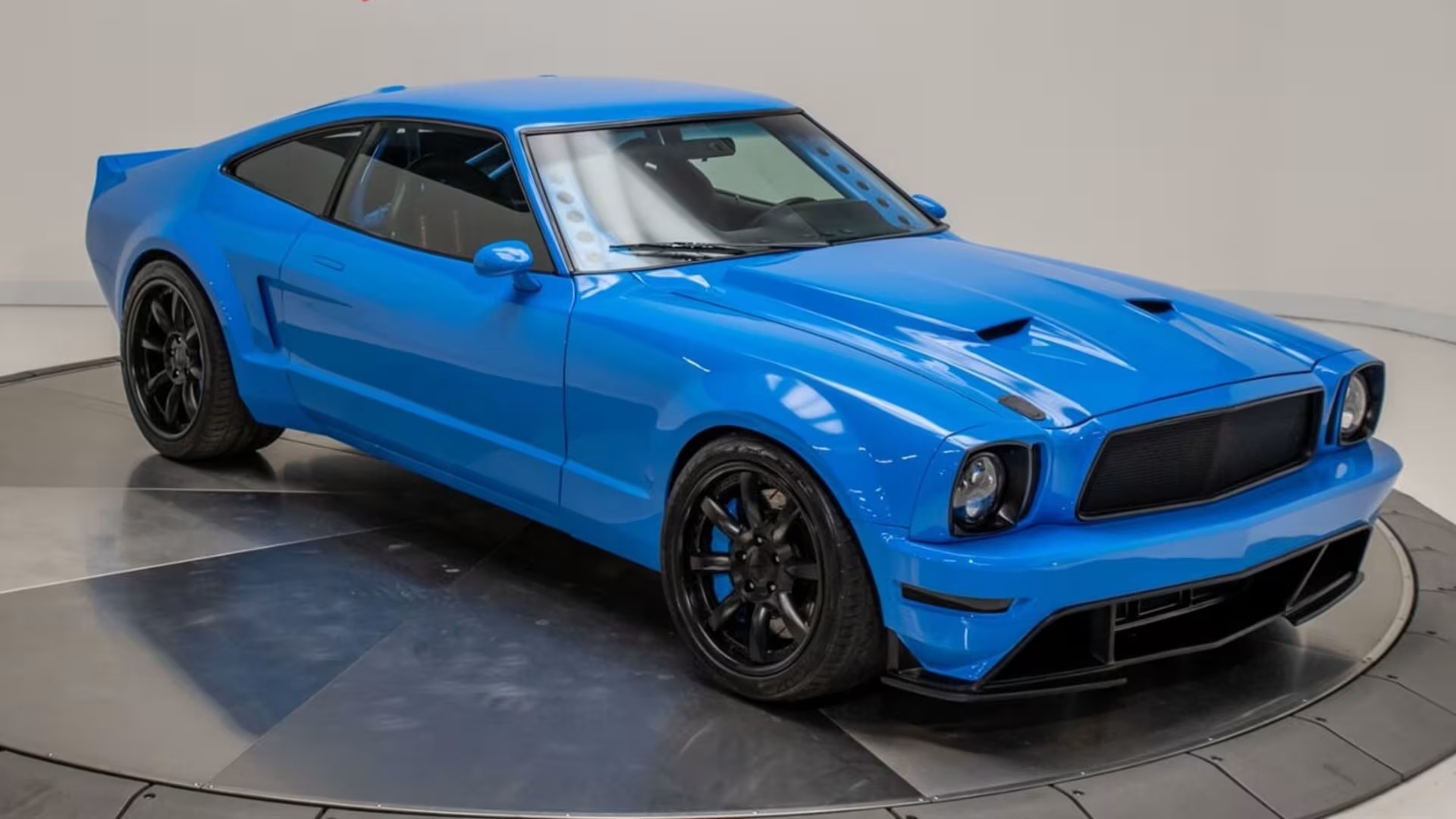
In 1978, Ford introduced the Mustang King Cobra in an attempt to reclaim its position in the muscle car market, which was being overshadowed by the competition from Detroit’s other big automakers. Unfortunately, this effort fell short, and the King Cobra is often remembered as one of the low points in Mustang’s history.
Built on the same platform as the Ford Pinto, the King Cobra came with a 5.0-liter V8 engine equipped with a two-barrel carburetor. Despite its size, this engine only produced a modest 139 horsepower, far from the power muscle cars were once known for. With just 4,313 units sold, the King Cobra didn’t live up to its fierce name, delivering more bark than bite.
In 1979, Ford replaced the King Cobra with an all-new Mustang, leaving this underwhelming model as a brief and forgettable chapter in the Mustang’s legacy.
The 1978 Ford Mustang marked the final year of the second generation of Mustangs, which had undergone significant changes since its debut in 1974. This iteration retained the Mustang’s classic styling while introducing new features to appeal to a broader audience. As the automotive industry shifted towards fuel efficiency, the 1978 Mustang balanced performance and practicality, making it a popular choice among drivers seeking a sporty yet economical car.
The design of the 1978 Ford Mustang featured a sleeker profile compared to earlier models. The front end showcased a more refined grille with rectangular headlights, which contributed to a modern look for the time. The body was slightly longer and wider, giving it a more substantial presence on the road. Available as both a coupe and a hatchback, the Mustang catered to various customer preferences, providing versatility in design and functionality.
Under the hood, the 1978 Mustang offered a range of engine options to suit different driving needs. The base model came equipped with a 2.3-liter four-cylinder engine, providing adequate power while prioritizing fuel efficiency.
For those seeking more performance, Ford offered a 5.0-liter (302 cubic inch) V8 engine, delivering a more exhilarating driving experience with its increased horsepower and torque. This diverse range of engine choices allowed buyers to select a Mustang that matched their performance expectations and fuel economy requirements.
The 1978 Mustang also featured improved suspension and handling characteristics. The car’s suspension system was refined to provide a smoother ride and better cornering capabilities, making it more enjoyable to drive. This focus on handling helped the Mustang maintain its sporty appeal, allowing it to find curves with confidence while providing a comfortable experience for everyday driving.
Inside the cabin, the 1978 Ford Mustang prioritized driver comfort and convenience. The interior design featured a more modern layout with updated materials and ergonomics.
High-backed bucket seats offered excellent support for both the driver and passengers, while the dashboard layout included easy-to-read gauges and controls. The hatchback variant provided additional practicality with a spacious rear cargo area, making it suitable for various activities, from weekend trips to daily commutes.
Safety features in the 1978 Mustang included improved crash protection measures, reflecting the industry’s growing emphasis on passenger safety. While it may not have had the advanced features found in modern cars, the Mustang offered options like front and rear crumple zones and reinforced body structures, ensuring that it met the safety standards of the time. These enhancements contributed to the overall appeal of the Mustang as a reliable family vehicle.
As emissions regulations became more stringent, Ford adapted the Mustang’s performance to comply with these requirements. While this led to a decrease in overall horsepower compared to earlier models, the 1978 Mustang still provided an engaging driving experience. Enthusiasts appreciated the Mustang for its ability to deliver sporty performance while maintaining compliance with evolving regulations, a balance that characterized the Mustang throughout its history.
In terms of market positioning, the 1978 Ford Mustang faced increasing competition from foreign automakers offering compact and fuel-efficient vehicles. However, the Mustang maintained a loyal fan base, thanks to its unique blend of performance, style, and practicality. As a result, it remained a popular choice among American drivers looking for a sporty car that could also serve as a daily driver.
The 1978 Mustang’s sales figures reflected its continued popularity, with strong demand contributing to its success in the market. Many buyers were drawn to the Mustang’s iconic status and its reputation as an American classic, factors that further solidified its position in the automotive. This enduring appeal helped the Mustang remain relevant even as consumer preferences shifted toward more fuel-efficient vehicles.
Following the 1978 model year, Ford made significant changes to the Mustang, transitioning to a new generation in 1979. The third-generation Mustang would adopt a more compact design and introduce a wider range of engines to cater to evolving market demands. Despite these changes, the legacy of the 1978 Mustang continued to influence future models, shaping the direction of the Mustang brand for years to come.
Today, the 1978 Ford Mustang is celebrated by classic car enthusiasts and collectors who appreciate its unique design and performance characteristics. Well-maintained examples can be found at car shows and enthusiast gatherings, where they garner attention for their nostalgic value and representation of a pivotal time in American automotive history. The Mustang’s place in the hearts of car lovers endures, ensuring that its legacy as a classic muscle car remains strong.
As the automotive continues to evolve, the 1978 Mustang stands as a testament to the enduring appeal of American muscle cars. Its combination of performance, style, and practicality has made it a significant entry in the Mustang lineage. Enthusiasts continue to cherish the 1978 Mustang for its role in shaping the future of the brand and for its representation of an era when performance was king.
The 1978 Ford Mustang embodies the spirit of American automotive culture. With its stylish design, diverse engine options, and focus on performance, it remains a beloved classic among car enthusiasts. As collectors and restorers seek to preserve this iconic vehicle, the 1978 Mustang will undoubtedly continue to be celebrated for its contributions to automotive history. Its legacy lives on, ensuring its place as a cherished symbol of American muscle and innovation.
9) 1980 Pontiac Trans Am Turbo A Missed Opportunity in Muscle Car History
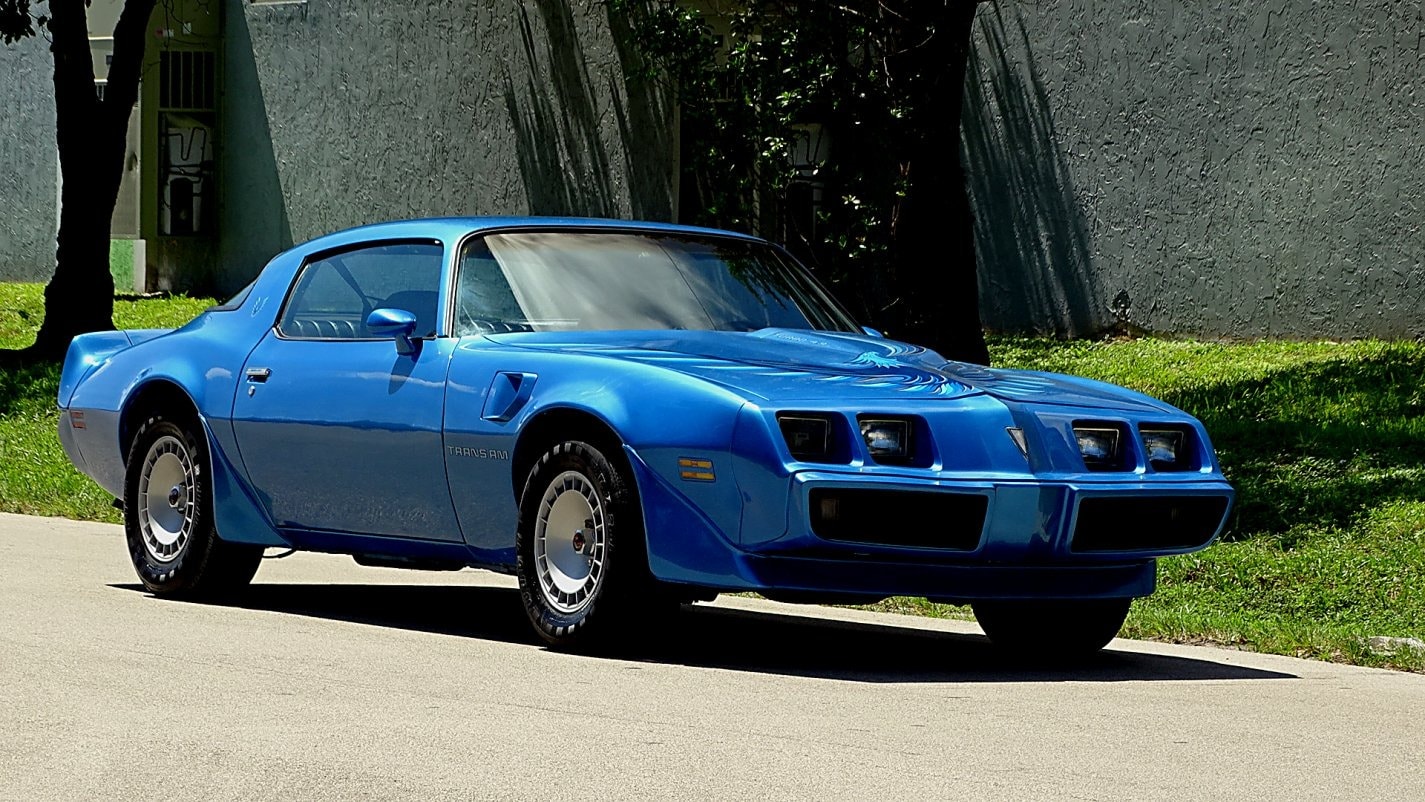
The 1973 Pontiac Firebird Trans Am was one of the last great muscle cars before the 1970s oil crisis changed everything. By 1980, Pontiac tried to revive the muscle car segment with the introduction of the Pontiac Trans Am Turbo, which came with a turbocharged 4.9-liter V8 engine.
However, the new model couldn’t match the power of its predecessor. While the 1973 version had a solid 290 horsepower, the 1980 Turbo model only produced 210 horsepower. Things got worse in 1981 when the engine’s output dropped further to just 200 horsepower. The turbo engine was also known for being sluggish, slow to respond, and riddled with reliability problems.
By 1982, Pontiac dropped the turbocharged engine from the Firebird, marking the end of the Trans Am Turbo experiment. It remains a reminder of how difficult it was for muscle cars to adapt during that era of tight emissions regulations and fuel economy concerns.
The Pontiac Trans Am is an iconic American muscle car that gained legendary status, particularly during the 1970s and 1980s. Introduced as a high-performance variant of the Pontiac Firebird, the Trans Am quickly became synonymous with power, style, and the automotive culture of its era. Its distinct design, impressive performance capabilities, and cultural impact have solidified its place in automotive history.
The Trans Am made its debut in 1969, but it wasn’t until the second generation, launched in 1970, that it truly began to carve out its identity. The 1970 model featured bold styling with aggressive lines, a prominent front grille, and the iconic “screaming chicken” hood decal that became a defining feature of the Trans Am. This era also marked the beginning of the Trans Am’s reputation as a performance powerhouse, appealing to a generation of car enthusiasts.
Under the hood, the Pontiac Trans Am offered a range of powerful engine options. Early models were equipped with high-performance V8 engines, including the legendary 455 cubic inch V8, which produced formidable horsepower and torque. This combination of power and lightweight construction allowed the Trans Am to deliver thrilling acceleration and impressive handling, making it a favorite among performance-oriented drivers.
The Trans Am’s performance was complemented by its advanced suspension system, which was designed to provide precise handling and stability. The use of wider tires and a lower stance contributed to its aggressive road presence while enhancing its cornering capabilities. This focus on performance allowed the Trans Am to compete effectively against other muscle cars of the time, establishing itself as a formidable contender on both the street and the racetrack.
Inside, the Trans Am offered a driver-centric cockpit that emphasized sportiness and comfort. High-backed bucket seats provided excellent support during spirited driving, while a well-laid-out dashboard featured easy-to-read gauges and controls. The interior was designed to create an engaging driving experience, ensuring that the driver felt connected to the road.
The 1970s and 1980s marked a golden era for the Pontiac Trans Am, with its popularity reaching new heights, partly due to its appearances in popular culture. The most notable of these was its starring role in the 1977 film “Smokey and the Bandit,” where Burt Reynolds drove a black Trans Am, further cementing the car’s status as an American icon. This film significantly boosted the Trans Am’s popularity, leading to increased sales and a lasting cultural legacy.
As emissions regulations and fuel economy standards tightened in the late 1970s, Pontiac adapted the Trans Am to meet these new challenges. The introduction of smaller, more fuel-efficient engines marked a shift in the model’s focus. Despite these changes, Pontiac maintained the Trans Am’s sporty character, offering turbocharged variants that combined decent fuel efficiency with performance.
Throughout the 1980s, the Pontiac Trans Am continued to evolve, introducing new technologies and design elements that kept it relevant in the competitive muscle car market. The third generation of the Trans Am debuted in 1982, featuring a sleeker, more aerodynamic design. This generation also marked the introduction of the fuel-injected 5.0-liter V8 engine, which delivered improved performance and efficiency.
The fourth generation, launched in 1993, brought further refinements, including a more modern design and advanced engineering. The Trans Am became available with various engine options, including the powerful LS1 V8, which delivered impressive horsepower and torque, allowing the car to compete with contemporary performance vehicles. This generation showcased Pontiac’s commitment to blending modern performance with the classic Trans Am appeal.
As the automotive shifted in the early 2000s, the Pontiac Trans Am faced increasing competition from foreign automakers and a changing market that leaned toward fuel efficiency and compact cars. The last Trans Am was produced in 2002, marking the end of an era for this legendary muscle car. Despite its discontinuation, the Trans Am’s legacy lives on, with enthusiasts continuing to cherish and restore these iconic vehicles.
Today, the Pontiac Trans Am is highly sought after by collectors and classic car enthusiasts. Well-preserved models can command impressive prices at auctions and car shows, reflecting their status as classic American muscle cars. The Trans Am’s design, performance, and cultural significance continue to resonate with fans, ensuring its place in the hearts of car lovers.
The Trans Am’s influence on popular culture and automotive history cannot be overstated. Its unique blend of style, performance, and charisma has left a lasting impact on the automotive industry. As car enthusiasts continue to celebrate the legacy of the Pontiac Trans Am, its story serves as a testament to the enduring appeal of American muscle cars.
In recent years, interest in the Trans Am has seen a resurgence, with aftermarket companies offering modern interpretations and restomods that pay homage to the classic design while incorporating contemporary performance enhancements. This renewed interest highlights the timeless appeal of the Trans Am and its ability to adapt to changing automotive trends.
The Pontiac Trans Am remains a symbol of American automotive culture, representing the spirit of freedom and performance that characterized an era. Its combination of iconic design, powerful performance, and cultural relevance ensures that the Trans Am will continue to be celebrated for generations to come. As classic car enthusiasts seek to preserve and restore these legendary vehicles, the Pontiac Trans Am stands as a proud reminder of the golden age of American muscle cars.
8) 1977 Chevrolet Monza Mirage A Sporty Look, But Not Much Else
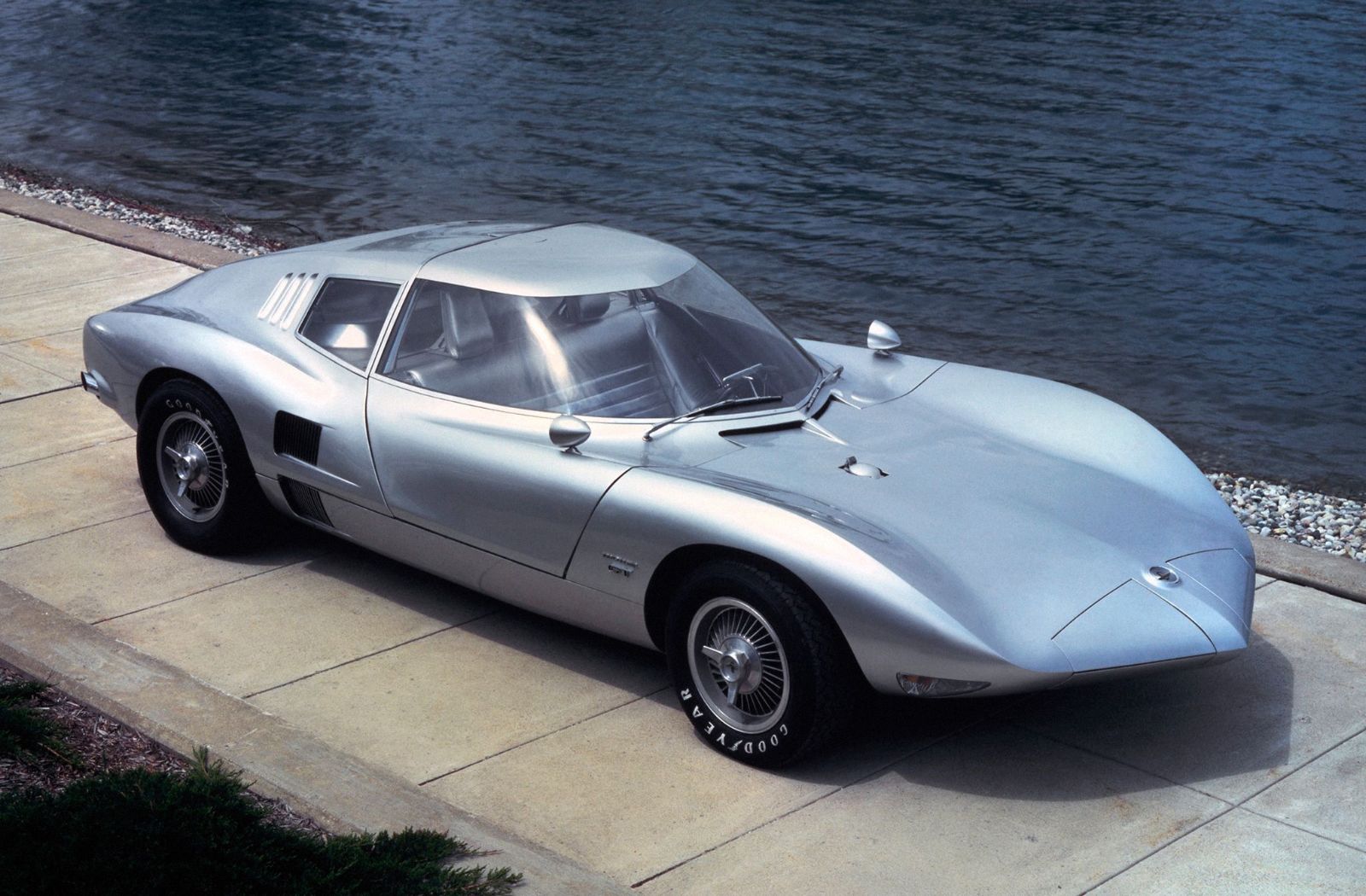
The Chevrolet Monza debuted in 1975, sharing many components with the Chevy Vega. In 1977, Chevrolet, in collaboration with Michigan Auto Techniques (MAT), introduced a sportier version of the Monza called the Mirage. This version featured an all-white body with bold red and blue racing stripes, designed to attract buyers looking for a sportier car.
However, despite its flashy appearance, the Monza Mirage failed to deliver in terms of performance. It came equipped with a 5.0-liter V8 engine that produced only 140 horsepower, which was far too weak for a car of its size and design. The Mirage was only available for one production year, with just 4,057 units made. Even that small number was more than enough, as buyers quickly lost interest in the underwhelming vehicle.
7) 1978-1983 Dodge Challenger A Disappointing Revival
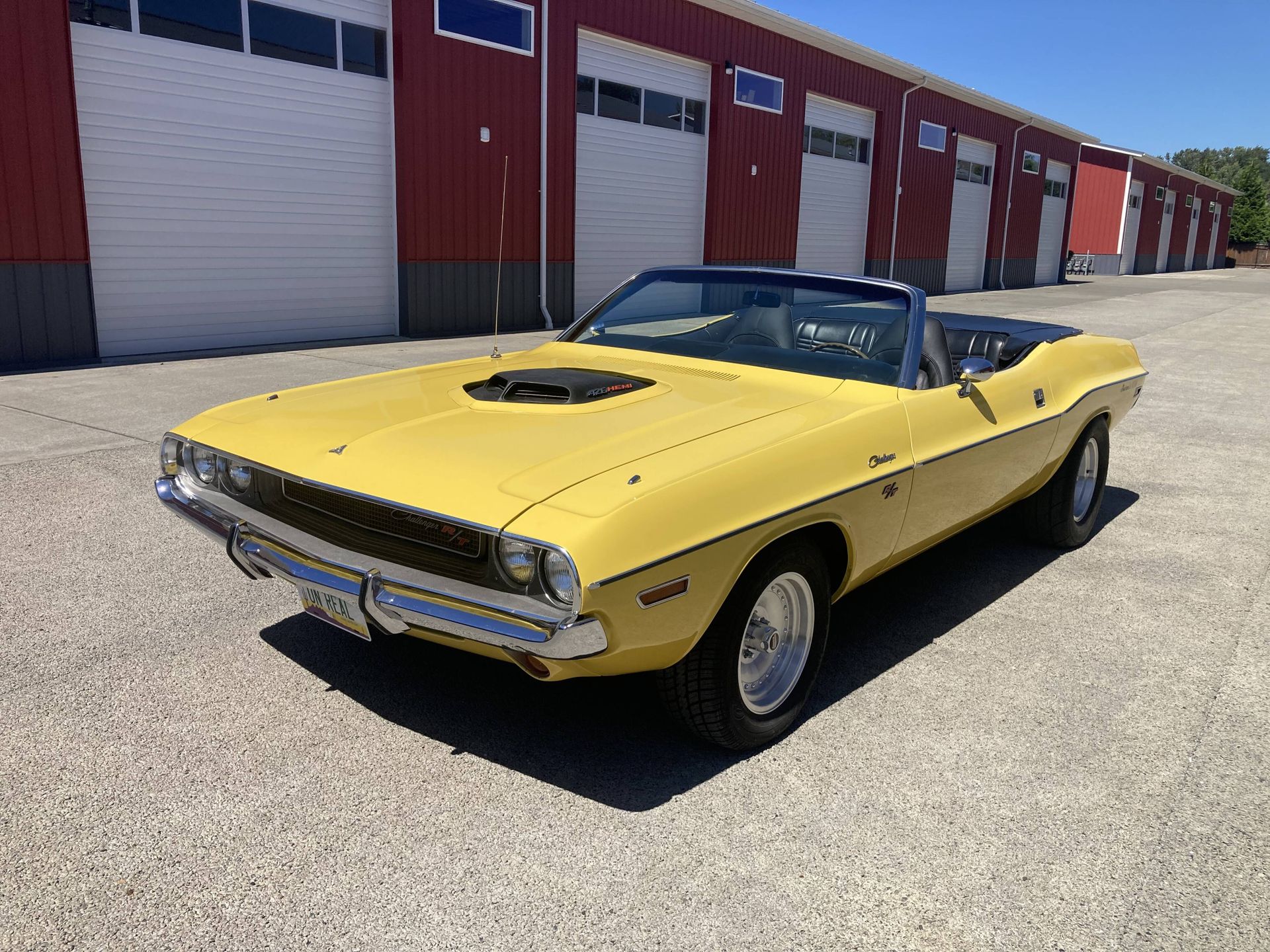
The second-generation Dodge Challenger, introduced in 1978, was a far cry from the muscle car that had captured attention in the early 1970s. The original Challenger, discontinued in 1974 due to the oil crisis, was known for its power and bold design. However, when Dodge decided to revive the nameplate in 1978, the result was disappointing.
This new version of the Challenger was actually a rebadged Mitsubishi Galant Lambda, which made it more of a standard passenger car than a muscle car. It came with two inline-four engine options—a 1.6-liter and a 2.6-liter engine, the latter offering only 105 horsepower. With its lackluster performance and uninspiring looks, this Challenger did little to live up to the name. Many feel it shouldn’t have been launched at all, as it tarnished the reputation of the once-iconic Challenger.
6) 1980-81 DeLorean DMC-12 Style Over Substance
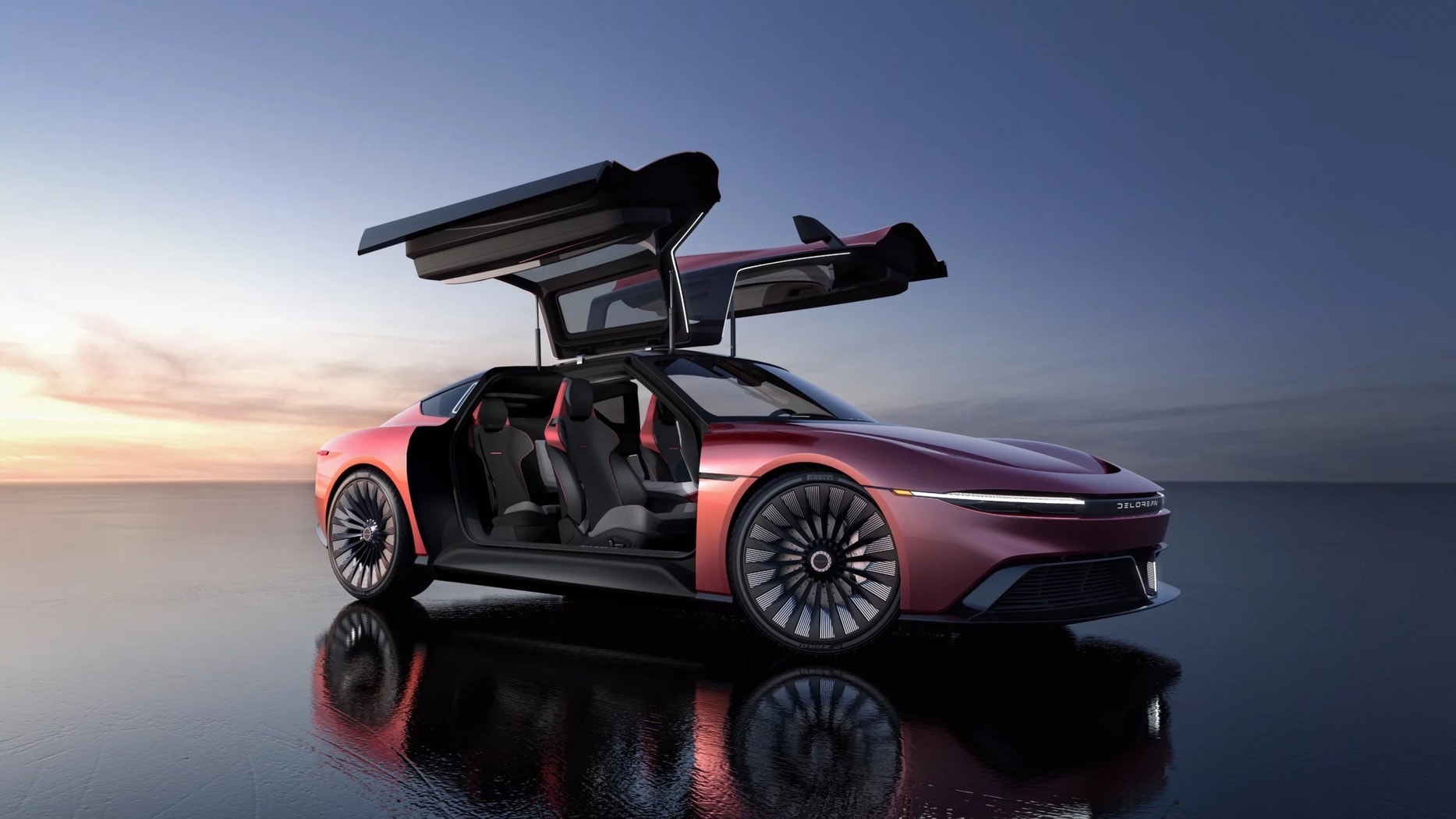
The DeLorean DMC-12 was a head-turner with its futuristic gullwing doors and stainless steel body, designed to outshine almost anything on the road. With British carmaker Lotus helping design the chassis, the car seemed destined for greatness. To power this stylish machine, DeLorean partnered with PRV (Peugeot-Renault-Volvo) for the engine, hoping for something equally impressive.
However, what they came up with was a 2.8-liter V6 engine producing only 130 horsepower. For a car as heavy as the DeLorean, this was far from enough. As a result, its 0-60 mph time was a sluggish 10.5 seconds, making it more about looks than performance. Though there were plans to add a turbocharger and boost its power, DeLorean went out of business before that could happen, leaving the DMC-12 as a stylish car with disappointing performance.
5) 1974 Ford Mustang II Ghia A Luxurious Misstep for the Mustang

The 1974 Ford Mustang II Ghia was Ford’s attempt to create a “luxury” version of the iconic Mustang. While it did help the brand find the oil crisis of the mid-70s, it came with a significant drop in performance. The styling, influenced by the Ghia coachbuilders of Italy, was decent, but the real issue lay beneath the surface.
The Mustang II was built on the same platform as the infamous Pinto, which already had a bad reputation. Under the hood, the powerful engines of the past were replaced by a modest 2.3-liter SOHC inline-4 or a 2.8-liter V6, both of which offered little in terms of performance. Despite its shortcomings, nearly 300,000 units were sold in 1974, reminiscent of the original Mustang’s success. However, buyers soon realized this was not the Mustang they were hoping for.
The Ford Mustang II Ghia, produced from 1974 to 1978, represents a unique chapter in the Mustang lineage. As the second generation of the Mustang, it was introduced in response to the 1973 oil crisis, which shifted consumer preferences toward smaller, more fuel-efficient vehicles. The Mustang II Ghia was notable for its blend of style, comfort, and practicality, aiming to attract a different demographic than its muscle car predecessors.
The design of the Mustang II Ghia featured a more compact profile compared to earlier models. It retained some classic Mustang elements, such as the long hood and short rear deck, but incorporated smoother lines and a rounded shape that reflected the design trends of the 1970s. The Ghia trim level added a touch of luxury with features like vinyl upholstery, chrome accents, and distinctive badging, elevating the Mustang II’s appeal.
Under the hood, the Mustang II Ghia offered a variety of engine options catering to the market’s demand for fuel efficiency. The base model came with a 2.3-liter four-cylinder engine, providing adequate power for everyday driving while focusing on fuel economy. For those seeking a bit more performance, Ford offered a 2.8-liter V6 engine and a 5.0-liter (302 cubic inch) V8, giving buyers a range of choices that balanced efficiency and performance.
The Mustang II Ghia was designed with a focus on handling and ride quality, characteristics that were crucial during this era. Its compact size and refined suspension system allowed for nimble maneuverability, making it an enjoyable car to drive in various conditions. While it may not have delivered the raw power of its muscle car predecessors, the Mustang II offered a comfortable and engaging driving experience that appealed to a broader audience.
Inside, the Mustang II Ghia featured a spacious and comfortable cabin designed for both driver and passengers. The interior included plush seating and a well-organized dashboard layout, emphasizing user-friendly controls and clear instrumentation. The Ghia trim elevated the cabin experience with high-quality materials, offering a more upscale ambiance that was particularly appealing to buyers looking for a sporty yet comfortable vehicle.
Safety was a growing concern during the 1970s, and the Mustang II Ghia reflected this trend with improved safety features. While it may not have included the advanced technology seen in modern cars, the Mustang II was designed with crumple zones and reinforced structures to enhance passenger protection. These improvements contributed to the car’s appeal as a family-friendly option, ensuring it met the expectations of safety-conscious consumers.
Despite its success, the Mustang II Ghia faced challenges as the automotive industry evolved. The demand for more powerful and performance-oriented vehicles began to resurface, leading to shifts in consumer preferences. However, the Mustang II maintained a loyal following, particularly among those who appreciated its unique blend of style, comfort, and efficiency. This helped the Mustang II Ghia establish a reputation as a practical and attractive compact car.
During its production run, the Mustang II Ghia achieved respectable sales figures, contributing to the overall success of the Mustang brand. Many buyers were drawn to its sporty design and reasonable pricing, making it an accessible option for those seeking a fun, stylish vehicle. The Mustang II Ghia also played a role in maintaining the Mustang’s presence in the market during a challenging period for American automakers.
After 1978, the Mustang II was phased out, paving the way for the third generation of Mustangs, which would embrace a more aggressive design and performance-oriented features. However, the Mustang II Ghia’s legacy continued to influence the Mustang lineup, showcasing the brand’s adaptability to changing market demands. The Mustang II’s unique characteristics have since earned it a place in automotive history, appealing to collectors and enthusiasts.
Today, the Ford Mustang II Ghia is appreciated by classic car enthusiasts who value its distinct design and historical significance. Well-preserved examples are often showcased at car shows and events, where they capture attention for their retro styling and representation of the 1970s automotive. As interest in classic cars continues to grow, the Mustang II Ghia stands out as a unique variant in the storied Mustang lineage.
The Mustang II Ghia exemplifies the evolution of the Mustang brand during a transformative era in the automotive industry. With its combination of stylish design, efficient performance, and practical features, the Mustang II Ghia remains a notable entry in the Mustang family tree. As enthusiasts continue to restore and appreciate these vehicles, the Mustang II Ghia’s legacy endures, ensuring its place in the hearts of classic car lovers.
The Ford Mustang II Ghia is more than just a vehicle; it symbolizes the adaptability of the Mustang brand in the face of changing consumer preferences. Its comfortable interior, refined styling, and efficient performance make it a unique representative of its time. As the automotive continues to evolve, the Mustang II Ghia serves as a reminder of the enduring appeal of the Ford Mustang and its ability to resonate with drivers across generations.
4) 1977 AMC Hornet AMX A Missed Opportunity in Muscle Car History
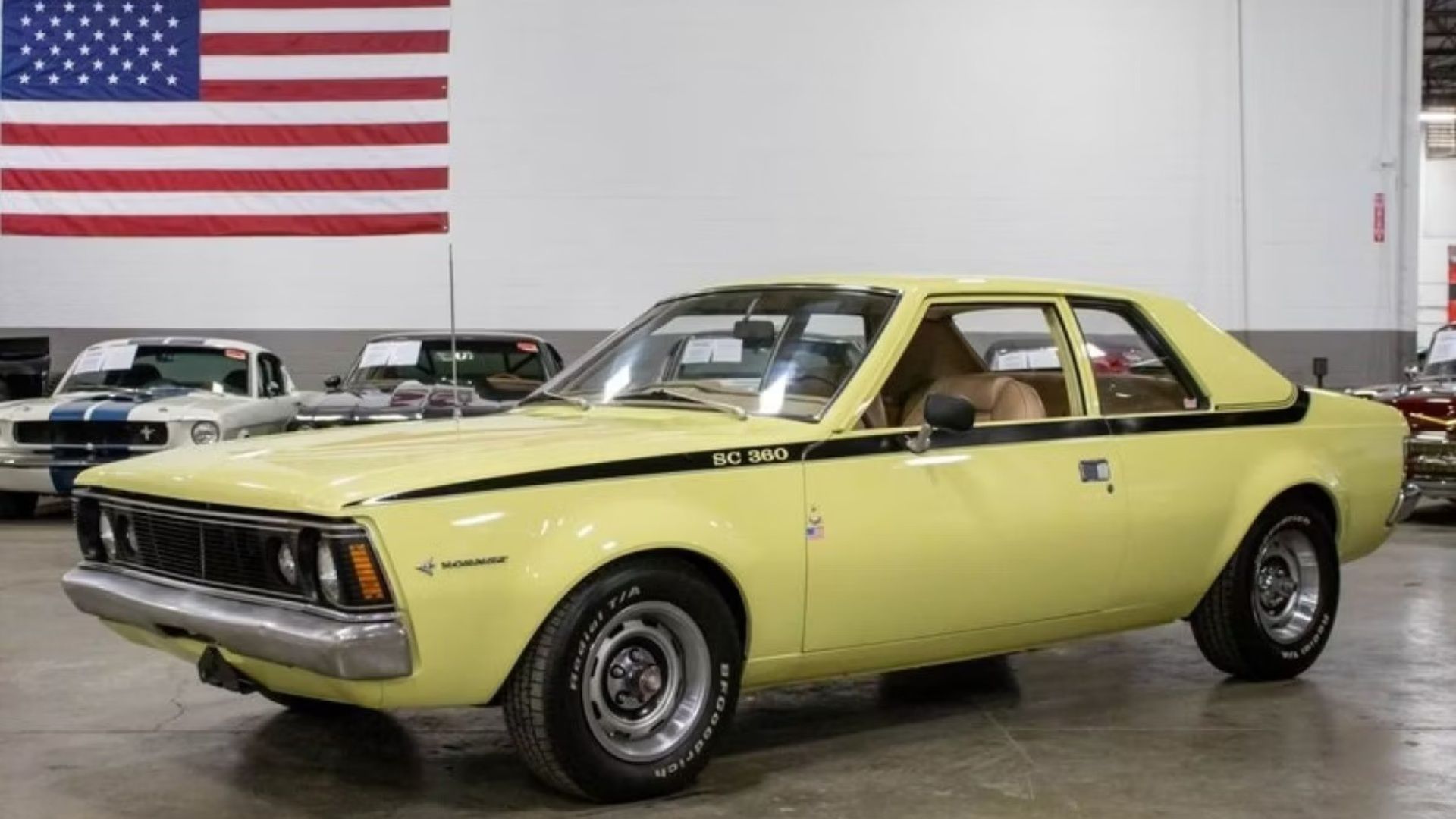
AMC had struck gold with the Javelin, a true competitor to the Mustangs and Camaros of its time. As a successful street and race car, the Javelin set the bar high for AMC. So when they tried to bring some of that magic to the mid-70s Hornet by creating the Hornet AMX, expectations were high.
The Hornet was originally an economy car, and mounting it on the AMX platform seemed like a promising idea. Unfortunately, the engine didn’t live up to its potential. Even the optional 5.0-liter V8, which should have provided muscle, produced only 120 horsepower—a weak output even for the underpowered malaise era.
By 1978, AMC replaced the Hornet with the more luxurious Concord, moving away from performance and towards comfort, marking the end of the Hornet AMX’s short and underwhelming run.
The AMC Hornet AMX is a distinctive vehicle that represents American automotive innovation during the 1970s. Launched by American Motors Corporation (AMC) in 1970, the Hornet was designed to compete in the compact car market. The AMX variant, introduced in 1971, was focused on performance, capturing the essence of muscle cars while maintaining the practicality of a compact sedan. Its unique combination of style, performance, and affordability made it a noteworthy option for enthusiasts.
The design of the AMC Hornet AMX featured a sporty, aggressive appearance that set it apart from other compact cars of its time. With its long hood, short rear deck, and wide stance, the AMX conveyed a sense of power and agility. The front end boasted a bold grille and distinctive headlights, while the rear featured a sloping fastback design. The overall aesthetic appealed to drivers looking for a car that embodied performance without sacrificing everyday usability.
Under the hood, the Hornet AMX was powered by several engine options, with the highlight being the 5.0-liter (304 cubic inch) V8 engine. This engine produced 150 horsepower and offered a satisfying driving experience, allowing the AMX to deliver spirited acceleration.
For performance enthusiasts, AMC also offered the option of a 5.9-liter (360 cubic inch) V8, which significantly increased power output and enhanced the car’s performance capabilities. This range of engines made the AMX appealing to a broad audience, catering to those who sought both efficiency and power.
The AMX was designed with performance in mind, featuring a specially tuned suspension system that enhanced handling and ride quality. The car’s lightweight body and responsive steering allowed it to find corners with confidence, providing drivers with an engaging experience. With performance-oriented tires and options for heavy-duty brakes, the Hornet AMX was capable of delivering exhilarating drives, making it a fun option for both daily commutes and weekend adventures.
Inside, the AMC Hornet AMX offered a spacious and comfortable cabin designed for both driver and passengers. The interior was thoughtfully laid out, featuring high-back bucket seats that provided excellent support. The dashboard included a well-organized arrangement of gauges and controls, emphasizing functionality. Although the focus was on performance, the AMX did not skimp on comfort, ensuring that drivers and passengers enjoyed their time on the road.
One of the standout features of the Hornet AMX was its versatility. As a compact car, it offered practicality for daily use, with ample trunk space and rear passenger room. The rear seats could accommodate passengers comfortably, making it suitable for families or groups of friends. This blend of performance and practicality appealed to a diverse range of buyers, allowing the AMX to carve a niche in the automotive market.
During its production run, the AMC Hornet AMX faced challenges in a rapidly changing automotive. The oil crisis of the 1970s shifted consumer preferences towards smaller, more fuel-efficient vehicles. Despite these challenges, the AMX maintained a dedicated following due to its performance credentials and unique character. The compact car market evolved, but the AMX managed to retain its identity as a fun, sporty option amidst the shifting trends.
The Hornet AMX enjoyed a relatively short production life, with its final model rolling off the assembly line in 1977. However, its legacy as a performance-oriented compact car has endured over the years. Collectors and enthusiasts appreciate the AMX for its distinctive design and spirited performance, and well-maintained examples are sought after in the classic car market. The rarity of the AMX has only increased its desirability, making it a notable entry in AMC’s lineup.
In popular culture, the AMC Hornet AMX has made appearances in various media, contributing to its status as an iconic vehicle of its era. Its representation in films and television has helped solidify its place in automotive history, reminding enthusiasts of the unique vehicles produced during the muscle car era. The AMX’s distinct character and performance capabilities continue to resonate with fans of classic American cars.
Today, the AMC Hornet AMX is celebrated for its unique place in automotive history. Its combination of performance, practicality, and style makes it a noteworthy representative of the compact muscle car segment. Car shows and enthusiast events often showcase well-preserved examples of the AMX, where it garners attention for its distinctive design and performance credentials.
The Hornet AMX embodies the spirit of its time, capturing the essence of American muscle in a compact package. As the automotive continues to evolve, the AMX remains a testament to the innovation and creativity that characterized the era. Its legacy continues to inspire admiration among collectors and enthusiasts, ensuring that the AMC Hornet AMX is remembered as a remarkable chapter in American automotive history.
The AMC Hornet AMX is more than just a car; it is a representation of a unique approach to performance and practicality. With its bold design, spirited performance, and practical features, the AMX remains an enduring symbol of American muscle car heritage. As enthusiasts continue to appreciate and restore these vehicles, the legacy of the Hornet AMX lives on, ensuring its place in the hearts of classic car lovers.
3) The 1980 Dodge Aspen R/T A Disappointing Chapter in Dodge History

The Dodge Aspen R/T is a classic example of how a promising car can fall from grace. When it was first introduced, the Aspen had the potential to be a strong contender in the muscle car market. However, from the very beginning, it struggled with serious issues that would ultimately lead to its downfall.
One of the biggest problems with the Aspen was its susceptibility to rust. Many owners found that their cars were more prone to corrosion than an old iron bucket left out in the rain. This led to numerous recalls aimed at fixing the rust issue, causing significant frustration among customers and damaging the Aspen’s reputation.
Another major setback for the Dodge Aspen was the discontinuation of its most powerful engine option. The 5.9-liter V8 was replaced with a less powerful 5.2-liter V8 that produced a disappointing 120 horsepower. This change left the Aspen lacking the muscle and performance that buyers had come to expect from a car with the R/T badge.
Despite its flaws, the Dodge Aspen did have some redeeming qualities, including a limited production run and stylish interiors and exteriors. However, these positives were not enough to save the Aspen from obscurity. In the end, the 1980 Dodge Aspen R/T serves as a reminder of how quickly fortunes can change in the automotive world, turning a once-promising vehicle into a forgotten relic.
The Dodge Aspen R/T is a classic American muscle car that was part of the Dodge lineup from the late 1970s. Launched in 1976, the Aspen was Dodge’s first compact car, intended to compete in the growing market for family vehicles with sporty characteristics. The R/T (Road/Track) version represented the high-performance trim, offering enthusiasts a blend of style, power, and practicality in a single package.
The Dodge Aspen R/T showcased a distinctive design that reflected the styling trends of the late 1970s. It featured a sleek body profile with angular lines, a prominent front grille, and a muscular stance. The car’s overall design emphasized a sporty image, appealing to buyers who wanted both a family sedan and a performance vehicle. The R/T badge signified a more aggressive and performance-oriented variant, enhancing its visual appeal with sportier accents.
Under the hood, the Dodge Aspen R/T was powered by a selection of robust engines that catered to performance enthusiasts. The most notable engine option was the 5.9-liter (360 cubic inch) V8, which provided an exhilarating driving experience with its impressive horsepower and torque.
This engine allowed the Aspen R/T to deliver thrilling acceleration and a spirited performance, making it a popular choice among muscle car aficionados. The powerful V8 option, combined with the R/T package, positioned Aspen as a formidable competitor in the muscle car market.
The Aspen R/T was equipped with a performance-tuned suspension system, enhancing its handling characteristics and ride quality. This setup allowed for a more dynamic driving experience, providing better cornering capabilities and stability at higher speeds. The combination of a powerful engine and an improved suspension made the Aspen R/T an enjoyable car to drive, appealing to those who valued both power and handling.
Inside the cabin, the Dodge Aspen R/T offered a spacious and comfortable environment for drivers and passengers. The interior featured high-quality materials, supportive seating, and a driver-focused layout. The R/T trim included unique touches that emphasized its performance heritage, such as sporty gauge clusters and upgraded upholstery. This blend of comfort and sportiness made the Aspen R/T suitable for daily driving while retaining its performance character.
As a family-oriented vehicle, the Aspen R/T also boasted practicality with ample trunk space and rear passenger room. The four-door configuration allowed for easy access to the back seats, making it a convenient choice for families. The ability to combine performance with everyday usability appealed to a broad range of buyers, allowing the Aspen R/T to carve a niche in the market.
While the Dodge Aspen R/T enjoyed a period of popularity in the late 1970s, it faced challenges as the automotive industry began to shift away from traditional muscle cars. The rise of fuel economy concerns and stricter emissions regulations during the late 1970s had a significant impact on the performance car segment. As a result, the production of the Aspen R/T was short-lived, with the model being discontinued after the 1980 model year.
Despite its relatively brief production run, the Dodge Aspen R/T has retained a loyal following among classic car enthusiasts and collectors. Its unique combination of performance, practicality, and stylish design makes it a sought-after model for those who appreciate vintage American muscle cars. Today, well-preserved examples of the Aspen R/T can be found at classic car shows and auctions, where they attract attention for their rarity and heritage.
The Aspen R/T’s legacy is also reflected in its place in popular culture. The car has made appearances in various films and television shows, solidifying its status as an icon of the muscle car era. Its representation in media has contributed to the nostalgia surrounding classic American cars, further enhancing its desirability among collectors and enthusiasts.
In recent years, the Dodge Aspen nameplate has gained attention as a classic car project for restorations and modifications. Enthusiasts enjoy reviving these cars, often upgrading their performance capabilities while maintaining their classic charm. This passion for restoration and preservation ensures that the Dodge Aspen R/T continues to be appreciated by a new generation of car lovers.
The Dodge Aspen R/T is a notable chapter in the history of American muscle cars, showcasing the brand’s commitment to performance and style during a transformative period in the automotive industry. Its combination of power, practicality, and a distinctive design makes it a significant entry in the muscle car pantheon. As collectors and enthusiasts continue to cherish the Aspen R/T, its legacy as a classic American muscle car remains secure.
The Dodge Aspen R/T embodies the spirit of its era, representing a time when performance cars were not only about speed but also about family functionality. As the automotive evolves, the Aspen R/T stands as a testament to the enduring appeal of American muscle cars, ensuring that its legacy will be remembered for years to come. The Aspen R/T is a unique piece of automotive history that continues to inspire admiration and respect among classic car enthusiasts.
2) 1971-75 Ford Maverick Grabber A Stylish Muscle Car with No Muscle

The Ford Maverick was introduced as an affordable alternative to the Mustang, and it quickly became a popular choice for those looking for a budget-friendly car. At its best, the Maverick came with a 5.0-liter V8 engine producing 210 horsepower, making it a decent performer for the time. Its name was inspired by unbranded range animals, and its longhorn-style hood gave it a distinctive look.
However, most base models were equipped with a disappointing 2.8-liter straight-six engine that generated only 105 horsepower. This lack of power was particularly glaring in the Grabber trim, which focused more on style than performance. Despite its flashy design, with features like soft vinyl seats and woody panels, the Maverick Grabber failed to deliver where it mattered most—on the road. The result was a car that looked sporty but lacked the power to back it up.
The Ford Maverick is a compact pickup truck that made its debut in the automotive market for the 2022 model year. This modern interpretation of the classic Maverick nameplate aims to combine utility, affordability, and efficiency, targeting a new generation of truck buyers. With its unique design and features, the Ford Maverick has quickly garnered attention for its practicality and versatility in a compact package.
The Ford Maverick’s design is characterized by a bold and muscular stance, blending the features of a truck with the functionality of a compact vehicle. Its exterior boasts a distinctive front grille, sharp LED headlights, and a sculpted body that gives it a modern appearance. The Maverick is built on Ford’s unibody platform, which contributes to its car-like driving dynamics while retaining the capability expected from a pickup truck.
Under the hood, the Ford Maverick offers two engine options, providing buyers with a choice between efficiency and power. The standard engine is a 2.5-liter four-cylinder hybrid that produces 191 horsepower, delivering impressive fuel economy ratings of up to 40 miles per gallon in the city.
For those seeking more power, an optional 2.0-liter EcoBoost turbocharged engine is available, generating 250 horsepower and offering enhanced performance for towing and hauling tasks. This dual-engine strategy caters to a diverse range of customer needs, from fuel-conscious drivers to those requiring more robust capabilities.
One of the Maverick’s standout features is its impressive payload capacity, making it practical for various applications. The truck bed offers a flexible design with a length of approximately 4.5 feet, providing ample space for transporting gear, tools, or recreational equipment. The Maverick also features integrated tie-downs and available bed accessories, allowing users to customize the truck bed according to their specific needs. This thoughtful design makes the Maverick a practical choice for both work and leisure activities.
Inside the cabin, the Ford Maverick emphasizes comfort and functionality. The interior features a modern layout with quality materials, intuitive technology, and ample passenger space. Standard tech features include a large touchscreen infotainment system with Ford’s SYNC 3 interface, Apple CarPlay, and Android Auto compatibility. The interior also offers thoughtful storage solutions, including under-seat storage and a spacious center console, enhancing the overall usability of the cabin.
Safety is a priority in the Ford Maverick, which comes equipped with a range of advanced safety features. Standard offerings include forward collision warning, automatic emergency braking, and a rearview camera. Higher trims add features like blind-spot monitoring and adaptive cruise control, ensuring that drivers feel confident on the road. This focus on safety reflects Ford’s commitment to providing a secure driving experience for both the driver and passengers.
The Maverick’s compact size makes it particularly appealing to urban drivers who may find traditional full-size trucks cumbersome. Its nimble handling and maneuverability make it an excellent choice for city driving, parking, and traveling tight spaces. The Maverick’s fuel efficiency further enhances its appeal as an everyday vehicle, offering a blend of practicality and economy that is often missing in the truck segment.
Another significant aspect of the Ford Maverick is its pricing strategy. Positioned as an affordable entry-level truck, the Maverick’s starting price is lower than many competitors in the market. This affordability, combined with its range of features and capabilities, makes the Maverick an attractive option for first-time buyers and those looking to downsize from larger trucks. The competitive pricing allows buyers to access a versatile and functional vehicle without breaking the bank.
In terms of customization, the Ford Maverick offers various trim levels and packages, allowing buyers to tailor their trucks to suit their preferences. Options range from practical features like upgraded towing capabilities to aesthetic enhancements that add style and personality. This flexibility appeals to a wide range of customers, ensuring that each Maverick can reflect its owner’s unique style and requirements.
The Ford Maverick has also garnered positive reviews for its environmental considerations. The hybrid model not only offers exceptional fuel economy but also contributes to lower emissions, making it a responsible choice for eco-conscious consumers. As the automotive industry continues to shift towards more sustainable practices, the Maverick stands out as a viable option for those seeking a greener alternative in the pickup segment.
As the Ford Maverick gains traction in the market, it is evident that the truck appeals to a diverse audience. Its blend of compact size, efficiency, and utility resonates with urban dwellers, outdoor enthusiasts, and those who appreciate a functional vehicle for everyday use. The Maverick’s modern design and thoughtful features make it a worthy contender in the competitive compact truck market.
In popular culture, the Ford Maverick nameplate holds nostalgia for many who remember the original Ford Maverick sedan produced from 1969 to 1977. This new iteration pays homage to that legacy while bringing a contemporary twist to meet modern demands. The Maverick’s ability to blend tradition with innovation makes it a unique offering in today’s automotive.
The Ford Maverick represents a significant shift in the compact truck market, appealing to consumers seeking practicality, efficiency, and affordability. Its combination of modern design, advanced technology, and strong performance makes it a compelling option for those looking for a versatile pickup. As the automotive continues to evolve, the Maverick is poised to become a popular choice for a new generation of truck buyers.
The Ford Maverick’s significance is rooted in its thoughtful design, robust capabilities, and commitment to affordability. As it carves its niche in the compact truck segment, the Maverick stands out for its ability to adapt to the needs of a diverse audience.
Its innovative approach and modern features ensure that it will remain a relevant and popular choice in the ever-changing automotive market. The Maverick is not just a truck; it is a reflection of a new era in pickup design that prioritizes efficiency and versatility for a modern lifestyle.
1) The 2004-2005 Chevrolet Impala SS A Disappointing End to a Legendary Nameplate
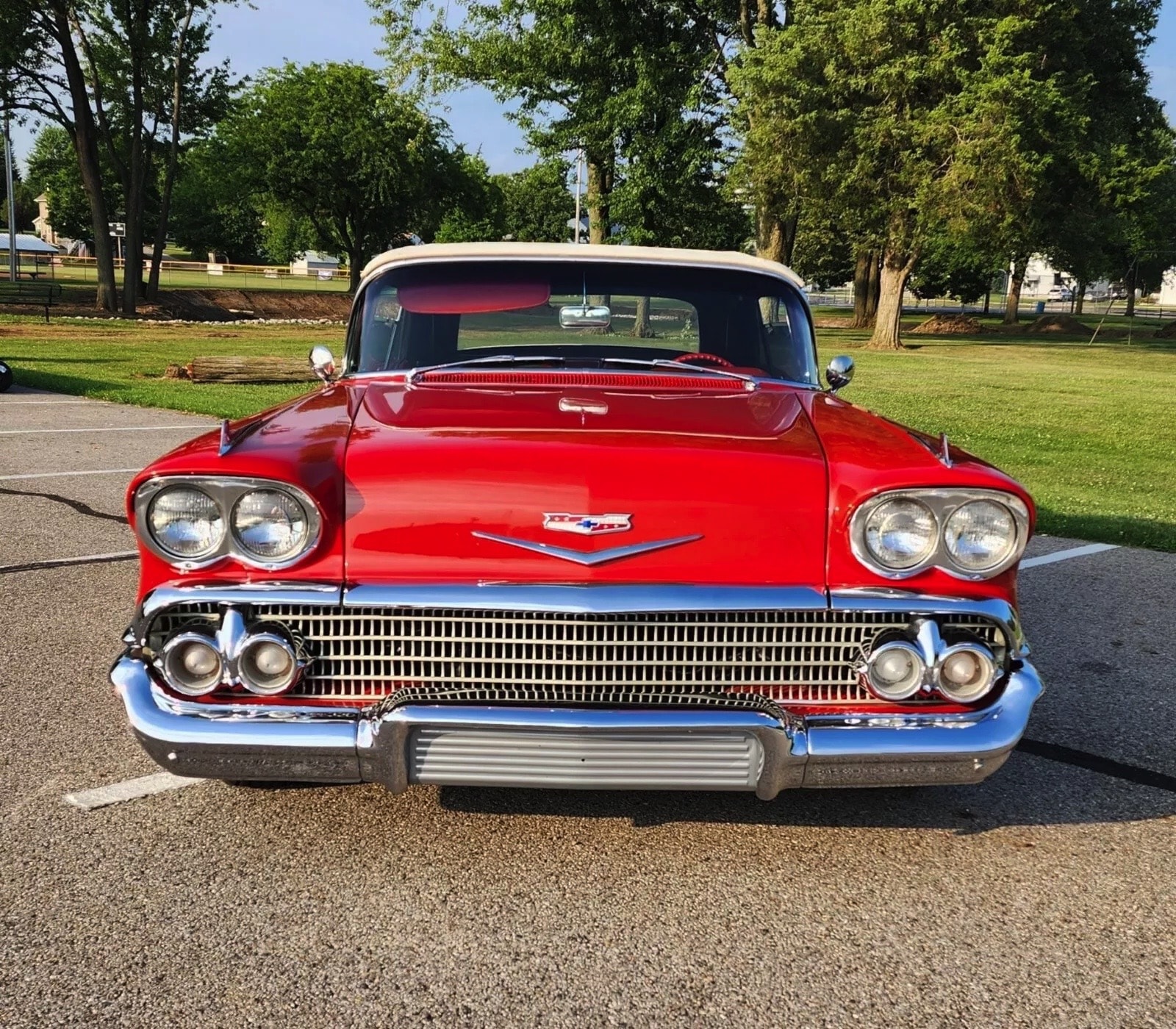
The Chevrolet Impala SS has long been celebrated as a symbol of muscle car excellence, especially during its heyday in the late 1960s. The 1967 model was the epitome of power and beauty, boasting an engine that produced a thrilling sound and performance that captured the hearts of car enthusiasts. However, by the time the 2004-2005 Impala SS was introduced, the once-proud nameplate had suffered a significant decline.
In 2005, Chevrolet made the controversial decision to redesign the Impala, effectively transforming it into a rebadged Lumina with a supercharged V6 engine. This change stripped the Impala SS of its powerful heritage, leaving it a mere shadow of its former self. The sleek and muscular design that once defined the Impala was replaced with a more mundane appearance, and the driving experience failed to evoke the excitement that the nameplate was known for.
The 2004-2005 Chevrolet Impala SS marked a sad chapter in the history of a legendary car. With its lackluster performance and uninspired design, it was a disappointing end to a nameplate that had once been synonymous with American muscle. Fans of the Impala SS could only look back fondly at its glorious past, mourning the loss of a true automotive icon.
The Chevrolet Impala SS is a legendary nameplate in American automotive history, recognized for its performance, style, and status as an iconic muscle car. Initially launched in the early 1960s, the Impala SS was designed to cater to a growing market of performance-oriented buyers looking for a blend of power and comfort in a full-size sedan. Over the decades, the Impala SS has evolved, but its reputation for performance and style has remained consistent.
The first-generation Impala debuted in 1958, but the SS (Super Sport) variant emerged in 1961 as a performance-focused trim level. The early models featured a sleek and elegant design, characterized by smooth lines and a distinctive front grille. The Impala SS was available as a two-door hardtop or convertible, appealing to buyers who desired both style and performance. With its combination of good looks and power, the Impala SS quickly gained popularity among enthusiasts.
Under the hood, the Chevrolet Impala SS offered a range of powerful engine options, setting it apart from standard Impala models. The 1961 Impala SS was available with a 348 cubic inch (5.7-liter) V8 engine, delivering impressive horsepower and torque. For buyers seeking even more power, Chevrolet offered the 409 cubic inch (6.7-liter) V8, which became synonymous with muscle car performance. The introduction of these high-performance engines allowed the Impala SS to deliver thrilling acceleration and establish itself as a formidable competitor in the muscle car market.
Throughout the 1960s, the Impala SS underwent various updates and redesigns, each time enhancing its performance and styling. The 1965 model year saw the introduction of the 396 cubic inch (6.5-liter) V8 engine, further solidifying the Impala SS’s status as a muscle car. This engine option provided exhilarating performance, and the SS trim featured sportier suspension and styling elements, enhancing the overall driving experience. The Impala SS became a favorite among muscle car enthusiasts, known for its blend of power and elegance.
The late 1960s marked the peak of the Impala SS’s popularity, with the 1969 model featuring a bold and aggressive design. The SS package included unique exterior trim, a performance-oriented suspension, and optional high-output engine choices. The 427 cubic inch (7.0-liter) V8 engine was introduced during this era, offering blistering acceleration and a thrilling driving experience. The Impala SS became synonymous with muscle car performance and was often seen on drag strips and in street racing.
In the early 1970s, the automotive industry faced new challenges, including rising fuel prices and stricter emissions regulations. These changes led to a decline in the performance capabilities of many muscle cars, including the Impala SS. The model continued to be offered through the 1970s but with less emphasis on performance and more focus on comfort and fuel efficiency. The classic muscle car era began to fade, and the Impala SS’s production came to an end in 1970.
After a hiatus, the Impala SS nameplate returned in the early 1990s, reintroduced as a high-performance version of the Chevrolet Impala. The 1994-1996 models featured a more modern design, equipped with a 5.7-liter LT1 V8 engine that produced impressive horsepower and torque. This revival brought back the performance-focused essence of the Impala SS, appealing to a new generation of enthusiasts. The 1990s version of the SS offered a comfortable ride with sporty handling, making it a favorite among those who appreciated a balance of performance and daily usability.
The Impala SS has continued to capture the attention of collectors and enthusiasts, with many well-preserved examples from both the classic and modern eras being sought after. The original models from the 1960s are particularly prized, often fetching high prices at auctions due to their rarity and iconic status. Restoration projects for the Impala SS are common, with enthusiasts dedicating time and resources to bring these classic cars back to their former glory.
Inside, the Chevrolet Impala SS has always provided a spacious and comfortable interior, designed with both driver and passenger comfort in mind. The cabin features quality materials, a driver-centric layout, and various options for audio and technology. Throughout its production, the Impala SS has maintained a reputation for offering a blend of luxury and performance, ensuring that it remains appealing to a broad range of buyers.
The Chevrolet Impala SS has also made a significant impact on popular culture, appearing in various films, television shows, and music. Its status as a classic American muscle car has been celebrated in automotive circles, and the Impala SS is often referenced as an example of mid-century American automotive design and performance. Its representation in media has further solidified its iconic status among car enthusiasts and collectors.
The Chevrolet Impala SS is a remarkable representation of American automotive history, symbolizing the golden age of muscle cars. With its combination of powerful engines, stylish design, and comfortable interior, the Impala SS has remained a beloved choice among car enthusiasts. The model’s legacy is celebrated through car shows, clubs, and gatherings where enthusiasts share their passion for this iconic muscle car.
As the Impala SS continues to grab collectors and car lovers, its significance in automotive history is undeniable. The car represents a unique blend of performance and style that has stood the test of time. The Impala SS serves as a testament to the enduring appeal of American muscle cars, embodying the spirit of speed and excitement that resonates with enthusiasts today. The Impala SS remains a cherished piece of automotive heritage, ensuring that its legacy will continue for generations to come.

